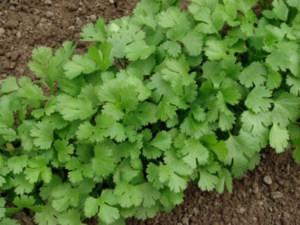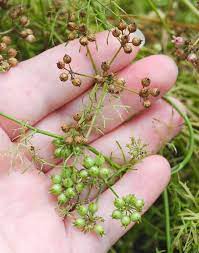Cilantro was briefly everywhere, creating miniflurries of conversation about whether or not you liked cilantro, which invariably included someone in the room saying, I can't stand cilantro. It tastes like soap. — Meg Wolitzer
The introductory quotation isn’t a big motivation for growing cilantro, but it’s a necessary caution to have right at the beginning. The fact is, some people have a genetic variation in a group of olfactory receptor genes that allows them to strongly perceive the soapy-flavored aldehydes in cilantro leaves.
No matter how much you may love the flavor cilantro adds to many dish- es, you would only be wasting your time trying to “educate” some people into enjoying it. Just so you know.
On the positive side, cilantro is one of the most versatile herbs in the kitchen. It's a staple ingredient in many Mexican, Indian, South and Southeast Asian, and Middle Eastern dishes.
- Most often eaten fresh, cilantro is also a welcome addition in salsa, curry, and zesty dressings.


FAST FACTS
Benefits and nutritional information:
-
Since cilantro is generally consumed in small amounts, it’s not going to provide significant levels of any nutrients. Just enjoy the flavors.
Starting:
- When planting outdoors, sow seeds 1/4” deep approximately 1” apart. Cover with a layer of fine soil, gently pat it down and water.
- Since cilantro moves through its life cycle quickly, it’s good to start new crops every 3 to 4 weeks.
When to plant:
- It's best to sow seed directly into the garden in March or after the danger of frost has passed. You can also replant in early fall. Just remember that cilantro is a cool weather plant, once temperatures reach 75 F, it will start to bolt.
- Growing cilantro in a container gives you the option to move it into a more shady location during warmer months. Additionally, container growing helps you ensure your cilantro gets the kind of light, well-drained soil it prefers.
Thinning, training
- When seedlings are an inch tall, thin out the weaker ones, leaving 3” to 4” of space between plants.
Signs of over-watering, nutrient deficiency
- Overwatering cilantro, not providing it sufficient drainage, or using too much nitrogen fertilizer and cause leaves to droop and turn yellow with a dying appearance.
Pests and pest controls
- Cilantro doesn’t seem to have significant pest issues. It seems to be a bit too spicy for most insects.
- It may show signs of feeding by whiteflies or thrips: brownish dead areas on the leaves.
- Powdery mildew can infest plants, but it’s rare.
Harvesting
- A cilantro plant can either be harvested in its entirety, or — to provide a continual harvest — by cutting only the oldest outer leaves and not taking more than 1/3rd of them. To harvest individual leaves, cut them at the base of the stem.
- Cilantro can be kept in the refrigerator, wrapped in damp paper towel, for up to two weeks, but it rapidly begins to lose flavor within a few days of harvest.
- If your cilantro bolts you have the option of letting them continue going to seed. In the end you’ll have your own supply of coriander seeds.


More information, if you want it:
Both cilantro and coriander come from the Coriandrum sativum plant. In the US, cilantro is the name for the plant's leaves and stem, while coriander is the name for its dried seeds. Internationally, the leaves and stems are called coriander, while its dried seeds are called coriander seeds. When used in cooked dishes, cilantro is typically added right at the end since its flavor doesn't stand up well to prolonged heat. Coriander, on the other hand, can be simmered in soups and stews, rubbed on meat before roasting or grilling, or baked into bread.
Other resources and articles
Cooking with cilantro: https://www.sunset.com/food-wine/kitchen-assistant/cilantro-recipes#cilantro-recipes
